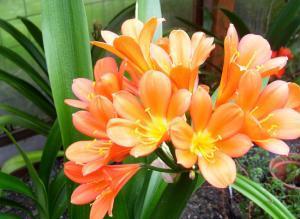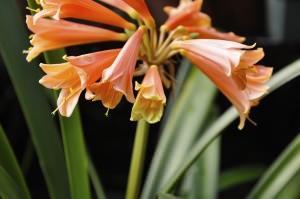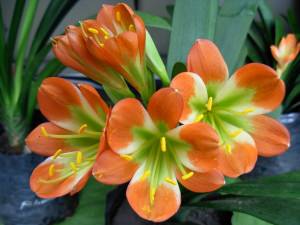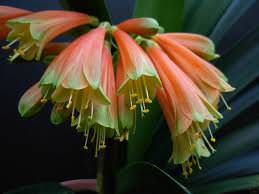Growing clivia
Post from EditorialsAny advice on how to grow and maintain beautiful specimens of clivia in the garden or at home, using clay pots and a correct exposure.
 Many flowers are named after famous lady, this is the case of Clivia, which takes its name from the Duchess of Northumberland which was dedicated by John Lindley.
Many flowers are named after famous lady, this is the case of Clivia, which takes its name from the Duchess of Northumberland which was dedicated by John Lindley.
It is a plant belonging to the family of Amaryllidaceae that includes evergreen plants valued for the leaves to the flowers of South African origin.
The main peculiarity of Clivia is an extensive root system consists of thick rhizomes that tend to expand to cover all the space available to them. This fact, however, rather than depress the plants, enhances flowering.
Furthermore, this feature allows for easy reproduction seen that the suckers can be removed and replaced.  The plant, as mentioned above, is an evergreen that looks quite impressive with very long ribbon-like leaves of a beautiful deep green.
The plant, as mentioned above, is an evergreen that looks quite impressive with very long ribbon-like leaves of a beautiful deep green.
The flowers are grouped in inflorescences while maintaining their individuality. Clivia Are relatively with small dimensions of tubular shape and, depending on the species, may be straight or falling.
They are usually red or orange but some varieties tend to yellow. The bloom lasts for several weeks even though the individual flowers do not stand for a few days.
After flowering, the plant form of the fruit or red berries that are characterized by a slow ripening on the tree with a stay very long.
There are several species of clivia, the main ones are: Clivia nobilis which is the main and which is recognized the name. Grows more slowly than other flowers with drooping red or orange. Of the same color are also the fruit, but the leaves are very lush and a very deep green. The Clivia miniata has been encoded in the mid-nineteenth century and is characterized by smaller dimensions compared to Nobilis but with larger flowers and erect.
The Clivia miniata has been encoded in the mid-nineteenth century and is characterized by smaller dimensions compared to Nobilis but with larger flowers and erect.
The Clivia caulescens is even more recent and is also native to South Africa. It is a plant with large dimensions that can reach two meters in height with flowers hanging light orange.
The Clivia Robusta, instead, has been codified very recently and is characterized by curved flowers but not completely pendants red color but with green end. Also in this case the dimensions are considerable.
Method of cultivation of Clivia
On the cultural front Clivia needs a sheltered place and survives outdoors only in mild climates.
Should remain at a constant temperature of around 20 degrees, can also survive at higher temperatures as long as you maintain the right humidity. During the winter Clivia does not tolerate temperatures below 12 degrees.  As regards the exposure, must be kept in a sunny location but never at the sun of the rectum. Generally most leaves are vertically longer the plant can be kept in the sun.
As regards the exposure, must be kept in a sunny location but never at the sun of the rectum. Generally most leaves are vertically longer the plant can be kept in the sun.
In general it is good to ensure a good air circulation as it is important to provide a fair amount of water from the spring to keep the soil moist but not wet to avoid creating harmful waterlogging.
'S winter reduce watering careful not to let water into the plant. It may be useful to spray the leaves regularly and dispose of drainage material in the saucer.
Repotting of Clivia should be done every two years with preferably earthenware pots because the latter provide two advantages: the stability of the plant (given the grandeur of the root) and breathability.
In this regard the vessel must not be too large so as to ensure good blooms. In this respect are also very useful fertilizing frequent (on average every two weeks with liquid fertilizer high in nitrogen) any postponement of the ground when this is used up by the root system of the plant. On the ground is good to use soil with pine bark and coarse sand in order to ensure the drainage.
On the ground is good to use soil with pine bark and coarse sand in order to ensure the drainage.
With this attention you will get excellent flowering that starts with the spring with flowers that remain on the plant for a few days but that are rejected all the time. If grown in the greenhouse during the cold period, they can begin to bloom in the month of November.
The dried flowers must be removed immediately to prevent rotting.
The multiplication of the plant takes place by division or by seed. That for seed, of course, involves a genetic variability while the division of the plant ensures a replica of the original plant.
79874 REGISTERED USERS










